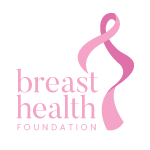Every woman is different in her personality, her looks, her shape… and her breasts. Most of these differences are very normal but occasionally a child can be born with an abnormality of the breast. Most do not require treatment and will resolve when left alone.
Nipple inversion
The nipple may fail to evert at puberty, giving rise to an inverted nipple. This is a common condition and not abnormal. It is most often bilateral. If there are no symptoms, no treatment is needed. Women can even still breastfeed with inverted nipples but may require a nipple shield.
If it does become a problem, or if you are unhappy with it, management of congenital nipple inversion can both be undertaken by manual techniques or surgery.
If a woman suddenly develops an inverted nipple in adulthood, it needs to be investigated because it may signify an underlying problem such as a cancer.
Accessory breasts
This is a very common condition, and if you look carefully maybe you have it! (One in five women do).
Supernumerary or additional breasts or nipples may develop along the milk line or milk streak, a reminder of the embryology of the breast in more primitive animals. They follow in the path of a line going from under the arm, over the nipple and down to the groin. In practice breast tissue or nipples most commonly develop above the waist.
During pregnancy and lactation this extra breast tissue may enlarge and even produce milk if a nipple is present. The tissue can also become painful around the period because it is stimulated by the same female hormones that control the breast. If this type of tissue causes concern, it can be removed surgically.
Amazia (absent breast)
Occasionally something goes wrong with the embryological development of the fetus in her mothers womb, such as a genetic abnormality or if the pregnant mother is exposed to dangerous factors such as a toxic drug, or a virus, the breast may fail to develop. This can be managed by reconstructive surgery when the girl is old enough. It is very important to ultrasound the normal breast and to ensure that there are no masses making that side seem bigger. No surgical removal of the normal breast should be carried out.
Breast enlargement in the baby
Breast abscesses can also occur in female sex hormones (oestrogen) when crossing the placenta in increased quantities, prior to birth. This results in a breast bud in a young infant which may even produce milk (called “witch’s milk”). It is essential that these small breast buds are not squeezed or biopsied, as this can affect normal development of the breast. No treatment is required, and the problem usually disappears within a few months after the birth.
These are not related to the breast tissue and are not breast cancer.
Prepubertal breast development
This is a type of premature breast development often occurs on one side only and is occasionally seen in young toddlers. The breast will develop without any problems in the future so no treatment is required except for firm reassurance that all is fine. Open surgical biopsies will interfere with breast development. Investigations should be done to check for other signs of secondary sexual development occurring early and to find a reason why.
Unusual breast shapes
The breast may have a constricted base resulting in the breast looking like a cone. This is caused by a tuberous breast anomaly. Failure of one breast to develop can be associated with lack of the underlying pectoral muscle to develop as well, called Poland Syndrome.
Any significant differences between both breasts should result in seeking advice from a specialist breast unit. Timing with regards to surgery needs to be when the breasts have finished growing.
